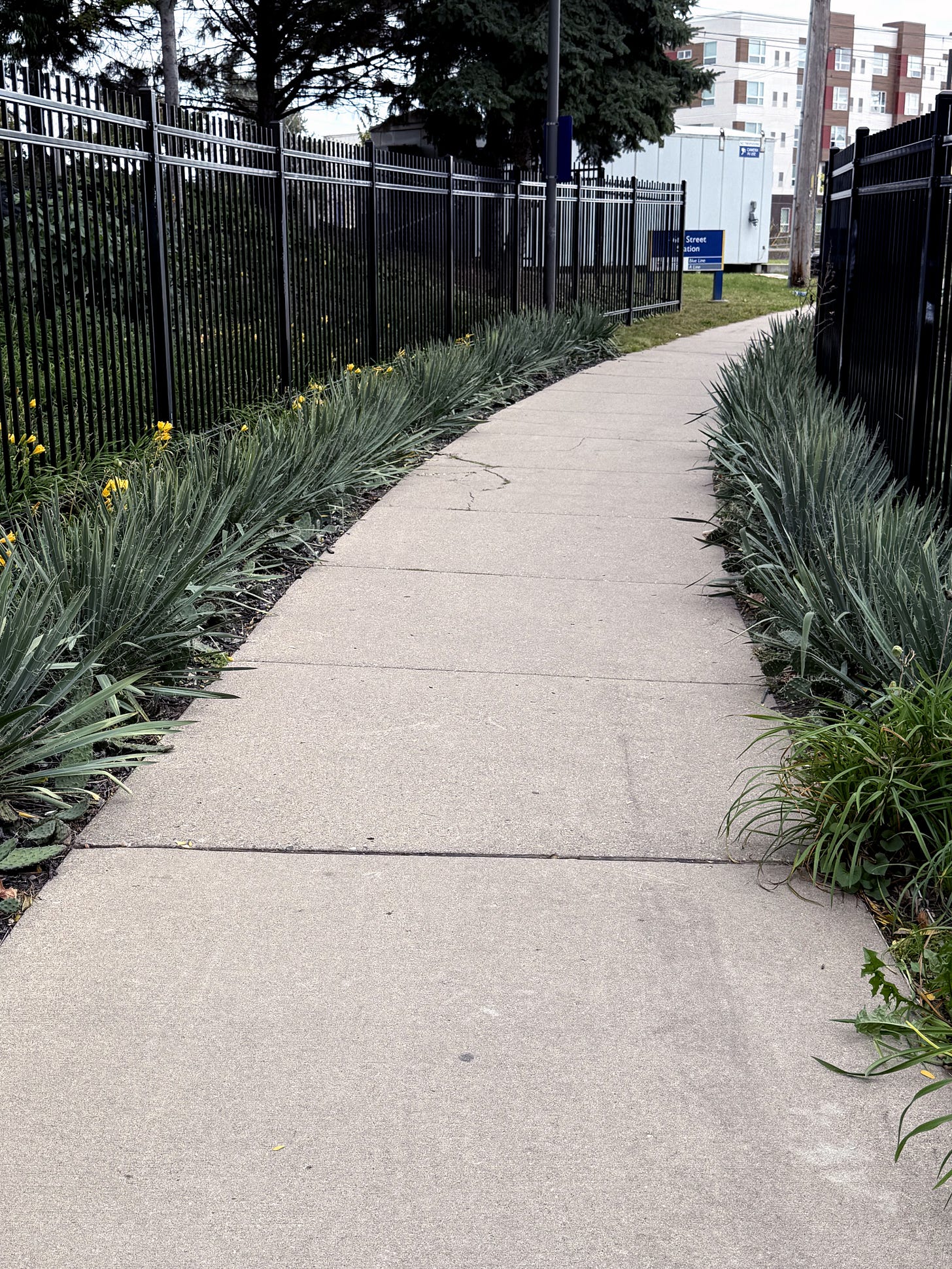Introduction
This interview began after a chance conversation with Nancy Ford at her shop, Repair Lair. (Zelda, our dog, had chewed through a small shoulder pack we were dropping off for repair.) We started talking about how business was going and whether conditions in the neighborhood had improved. According to Nancy, the area around the 46th & Hiawatha transit station remains deeply troubled. Quick errands—like picking up dog food at 47th and Hiawatha—can involve witnessing public drug use, people in visible distress, and unpredictable encounters in nearby parking lots and alleyways. It’s hard not to wonder how the surrounding businesses manage to stay in operation. Many now rely on private security to make it possible.
Nancy’s neighbor, Amy Johnson, has also been documenting what occurs in the neighborhood. In 2021, she began the Instagram account @karenthecamera to raise awareness of the daily activity along the footpath that connects the light rail station to the neighborhood. Her account has grown to nearly 21,000 followers, and her videos regularly show car thefts, open drug use, and prostitution. Both Amy and Nancy have tried repeatedly to raise concerns with elected officials while also helping people in crisis where they can.
Across Minneapolis and the metro area, governments and nonprofits are launching programs intended to address homelessness, addiction, and mental health—from new shelter beds and affordable housing investments in Minneapolis, to Hennepin County’s Homeless to Housing program, to Metro Transit’s Homeless Action Team.
Despite these efforts, residents in neighborhoods like 46th & Hiawatha continue to experience daily disorder. The challenge might not be a lack of initiatives. It could be the lack of coordination among them. When systems overlap, duplicate effort, or work at cross-purposes, costs rise while effectiveness falls. Progress will require a unified approach between the city, county, state, and nonprofit partners—one that recognizes the complex causes of homelessness and addiction while also respecting the needs of residents and businesses most directly affected.

Interview Summary
Nancy Ford and Amy Johnson describe years of escalating public-safety problems around the 46th & Hiawatha light-rail station, including open drug use, harassment, theft, discarded needles, and unpredictable behavior from people in crisis. Nancy discusses how these experiences shaped her two City Council campaigns and ultimately contributed to her decision not to run again—citing a lack of institutional support, personal attacks, and the emotional toll. Amy explains why she created the Instagram account “Karen the Camera” as a way to document conditions that officials had dismissed or ignored, noting that images were often the only way to prompt a response.
Both women detail the significant steps they and Metro Transit have taken to mitigate the problems—from increased lighting and fencing to private security patrols—but emphasize that these interventions merely push the behavior around rather than address underlying addiction and service-resistant populations. They describe repeated thefts and safety threats to their homes and businesses, the burden of documenting crimes themselves, and the costly measures required just to feel safe in their own neighborhood. Despite some cooperation from Metro Transit, they express frustration with limited follow-through from city leadership and being excluded from community-safety discussions.
The conversation widens into a critique of Minneapolis’s broader public-safety landscape, where residents, city officials, the county, and nonprofits often shift blame rather than coordinate meaningful solutions. Nancy and Amy note divisions within the city about how to balance enforcement, treatment, and humanitarian responses—while emphasizing that the lived impact on their neighborhood has been severe. They argue that unless the city and county confront the realities of addiction and disorder more directly—and work together rather than in silos—residents will continue to bear the costs, and some, like Nancy, may eventually leave the city altogether.









